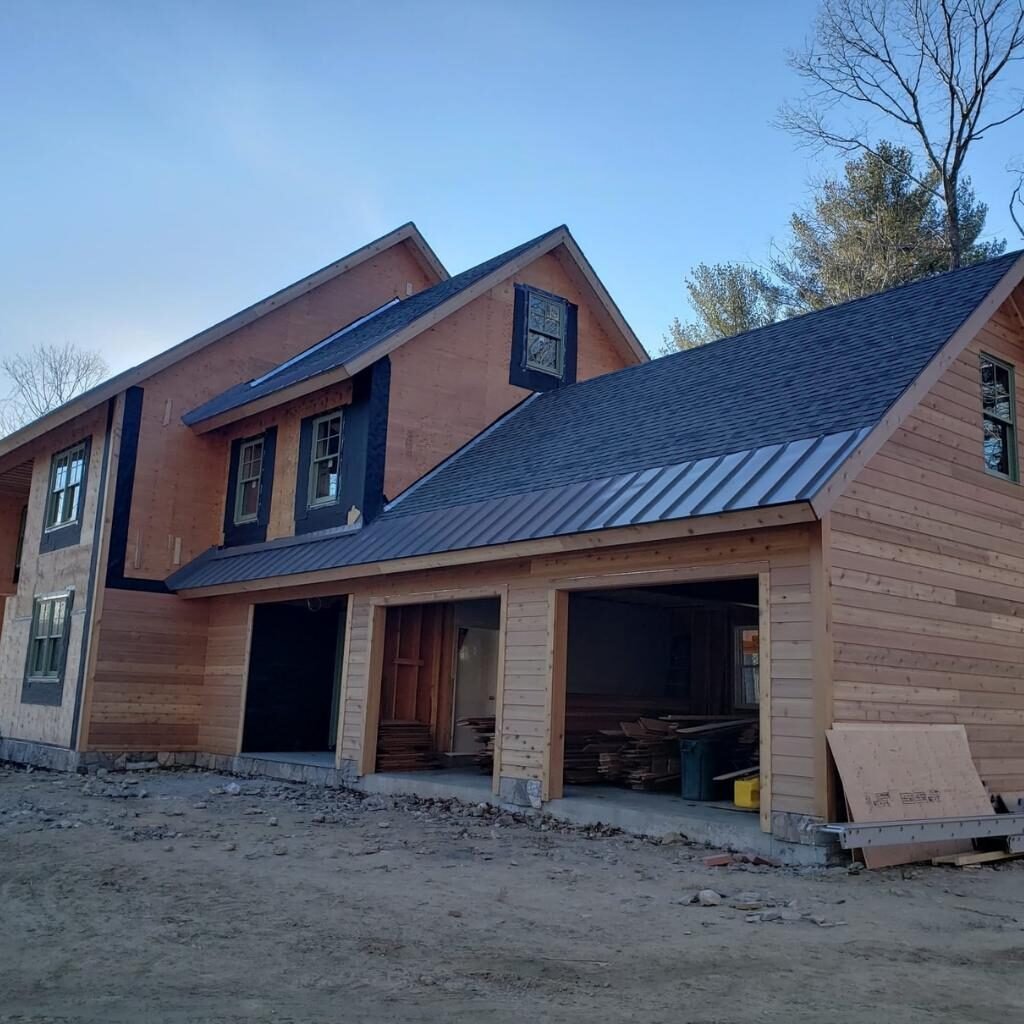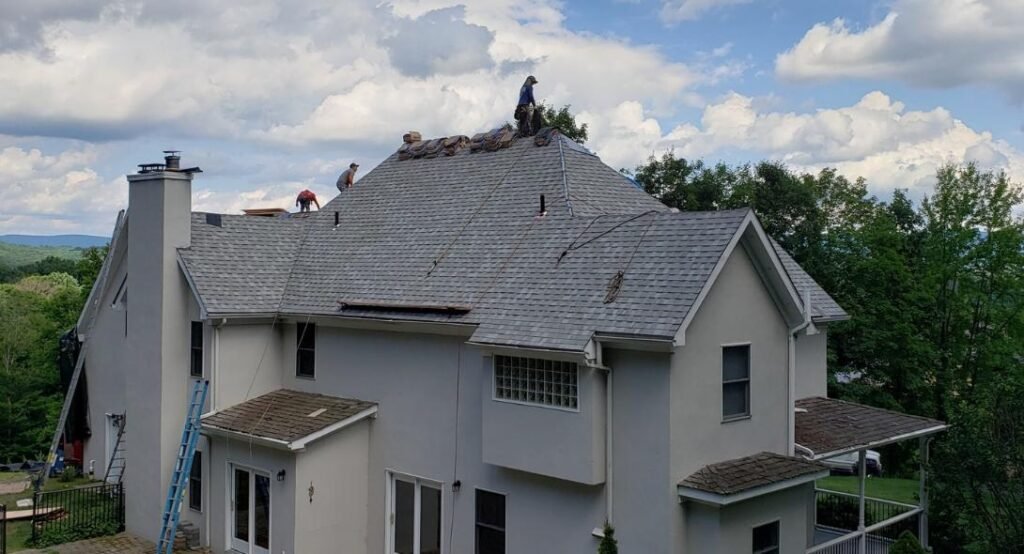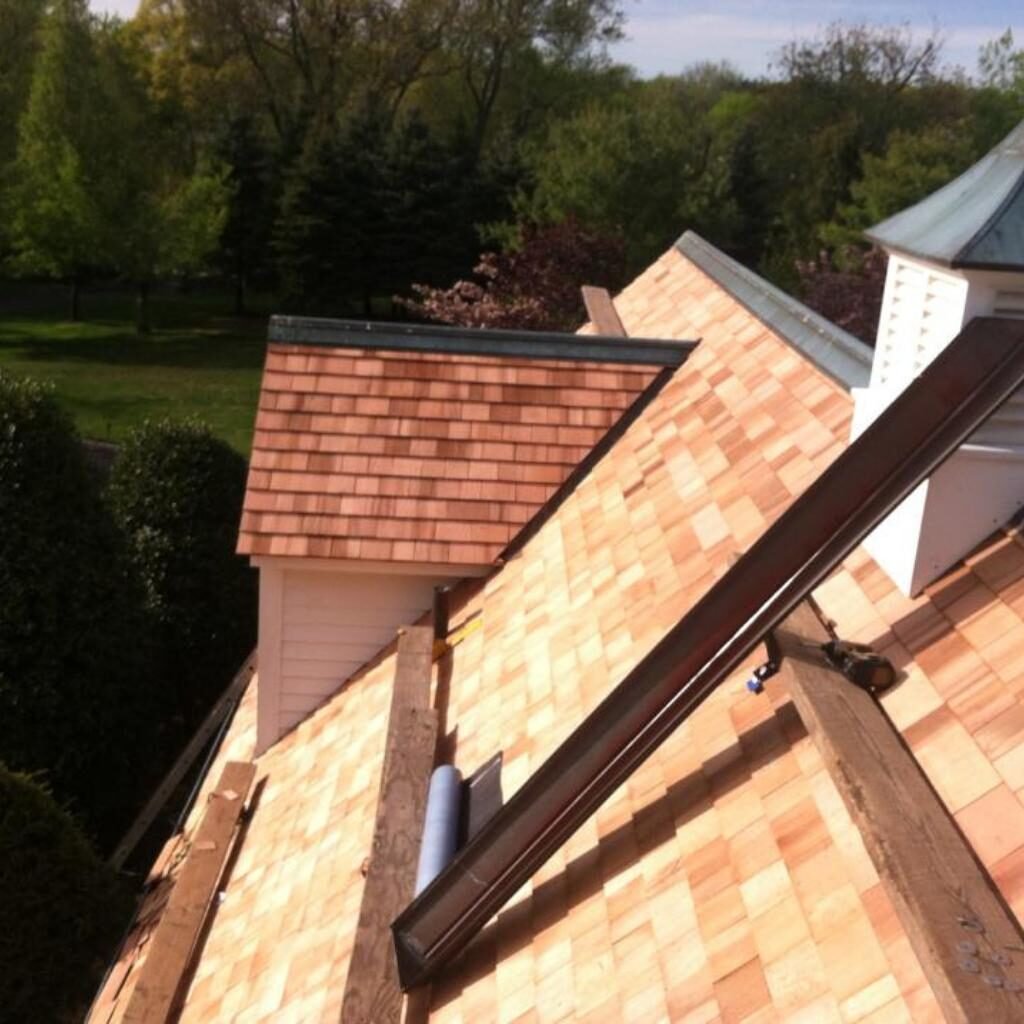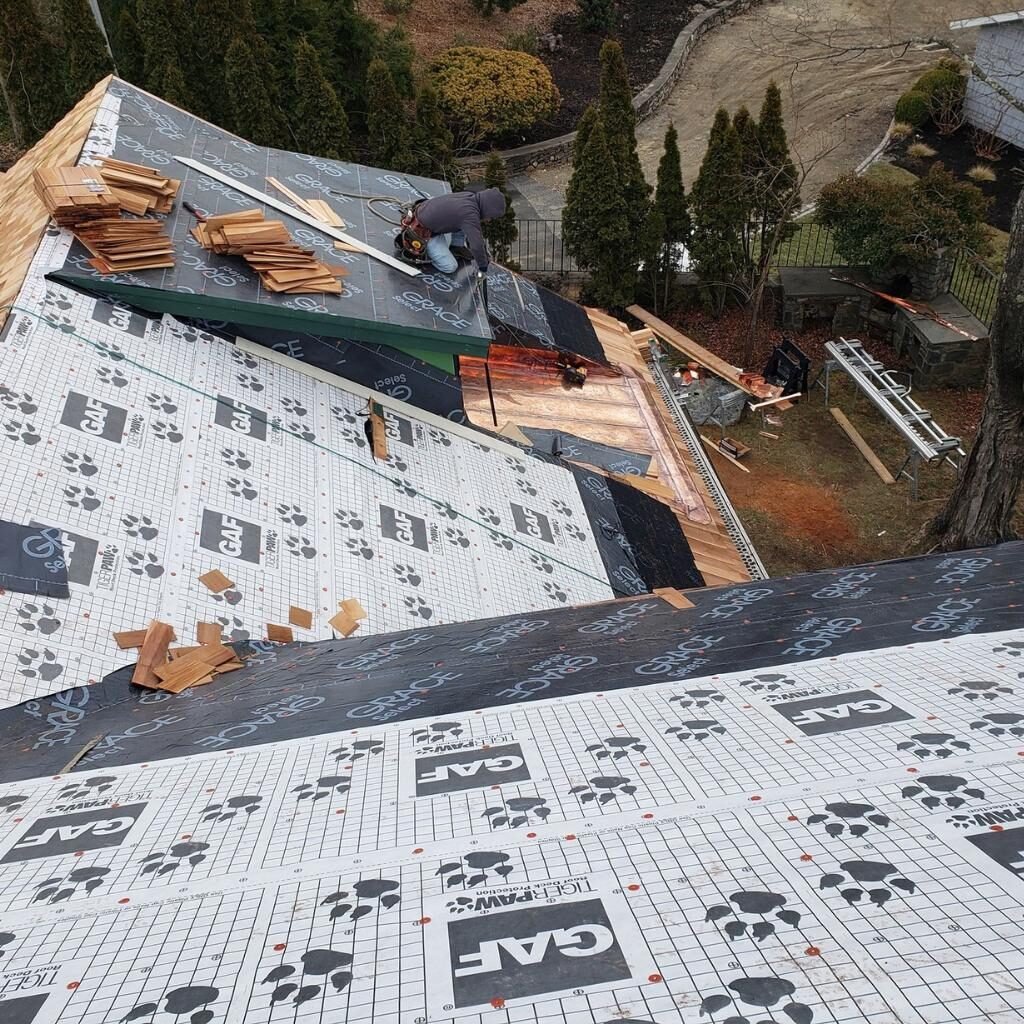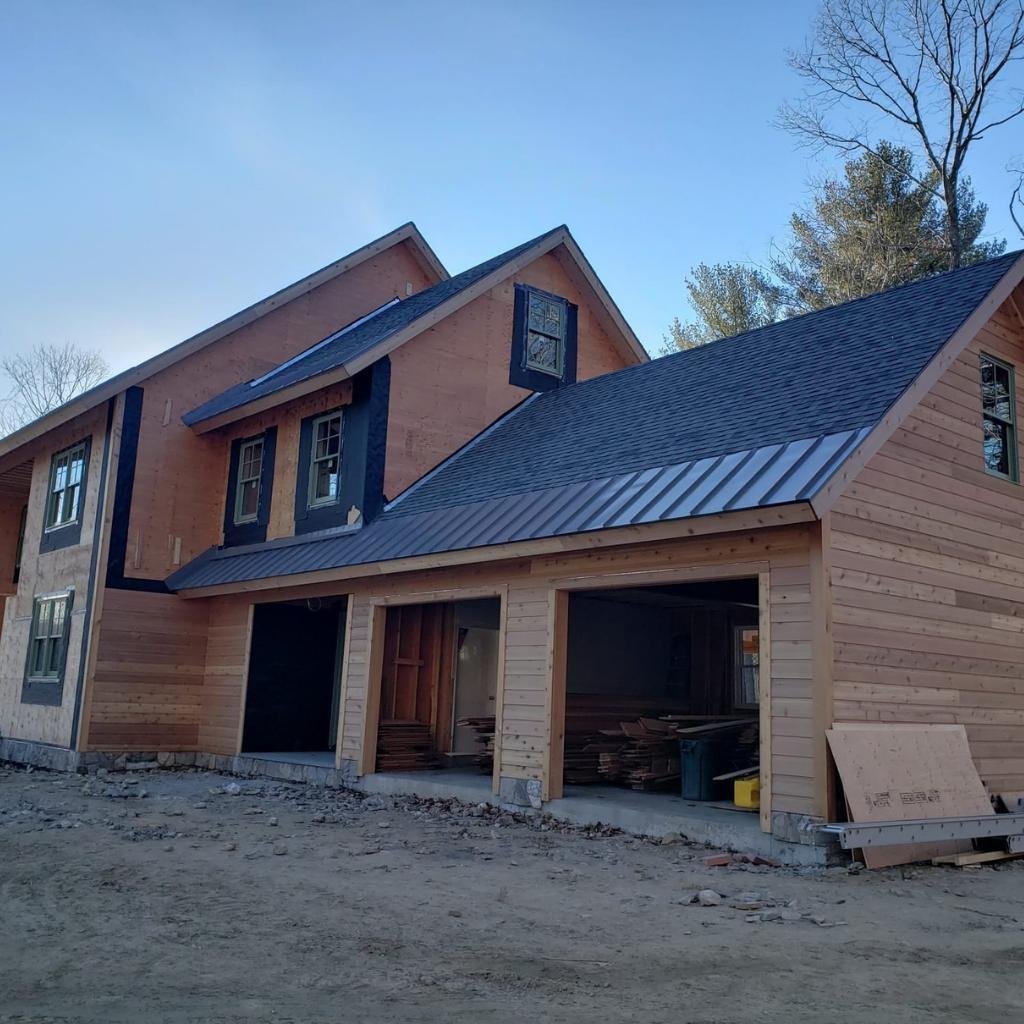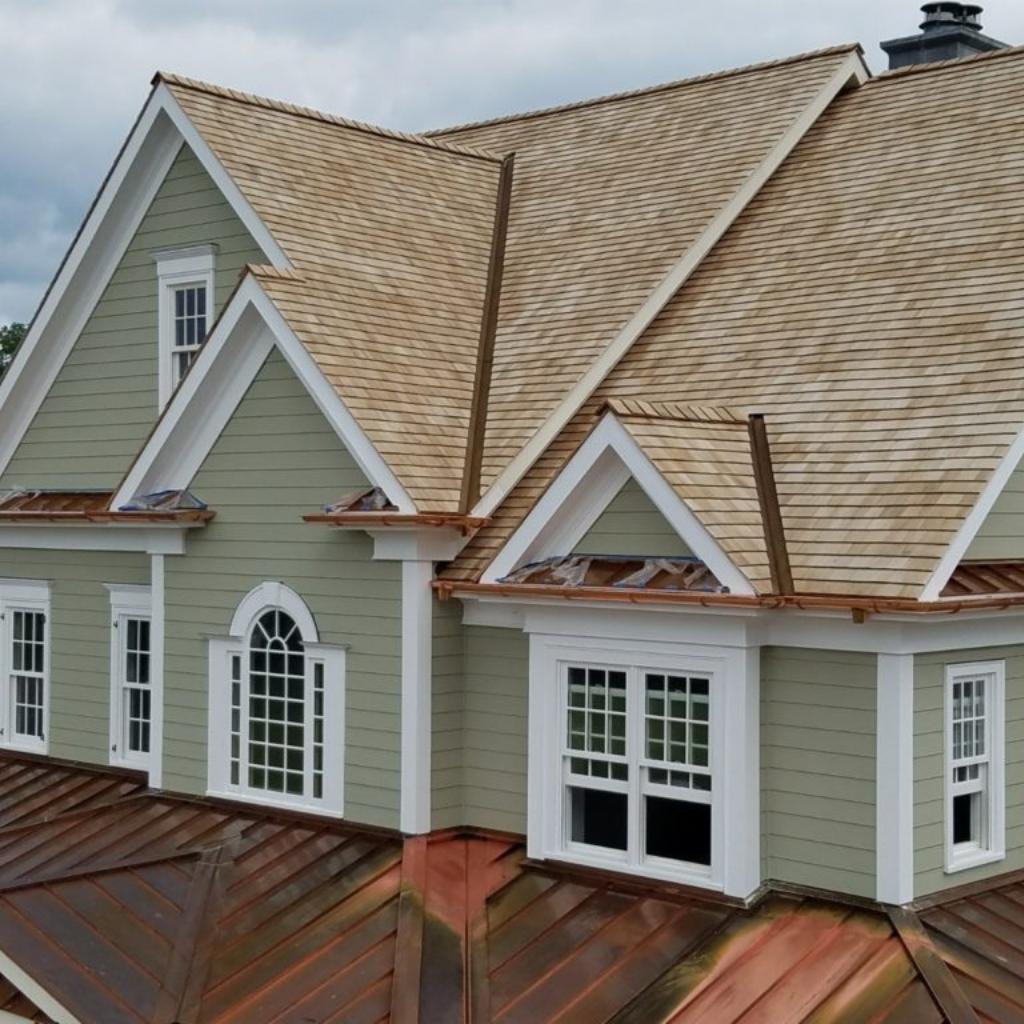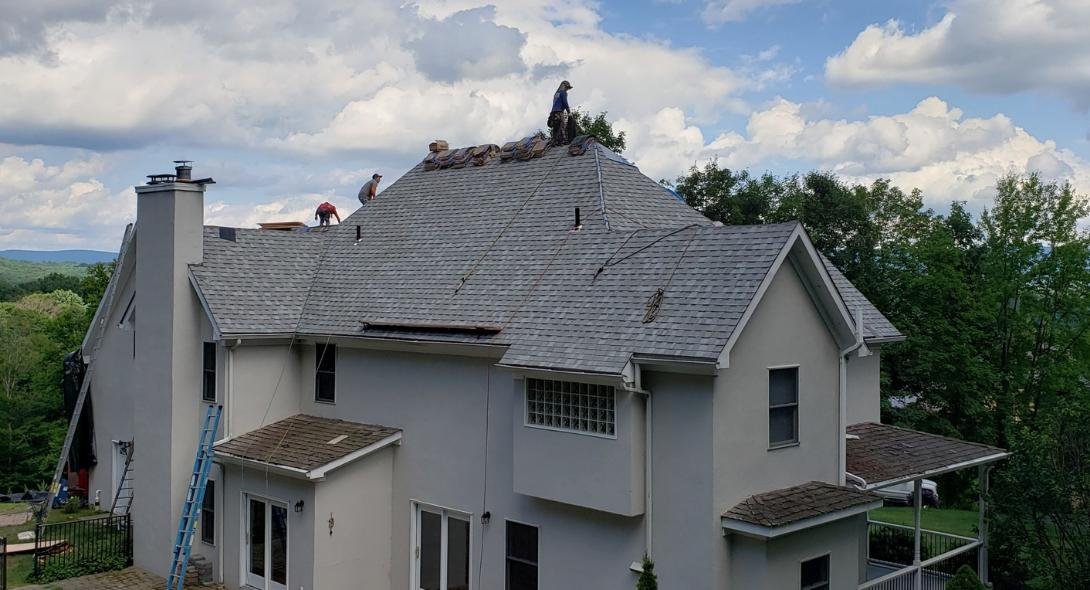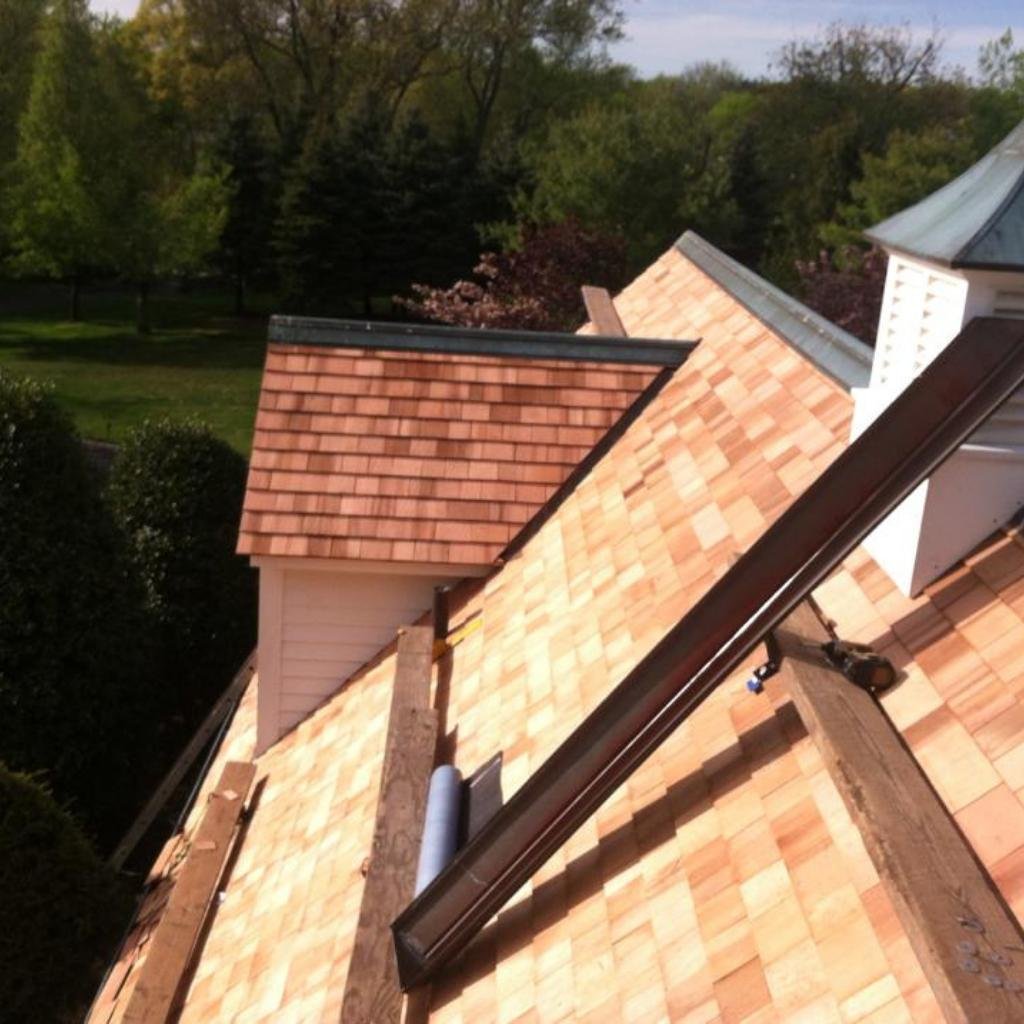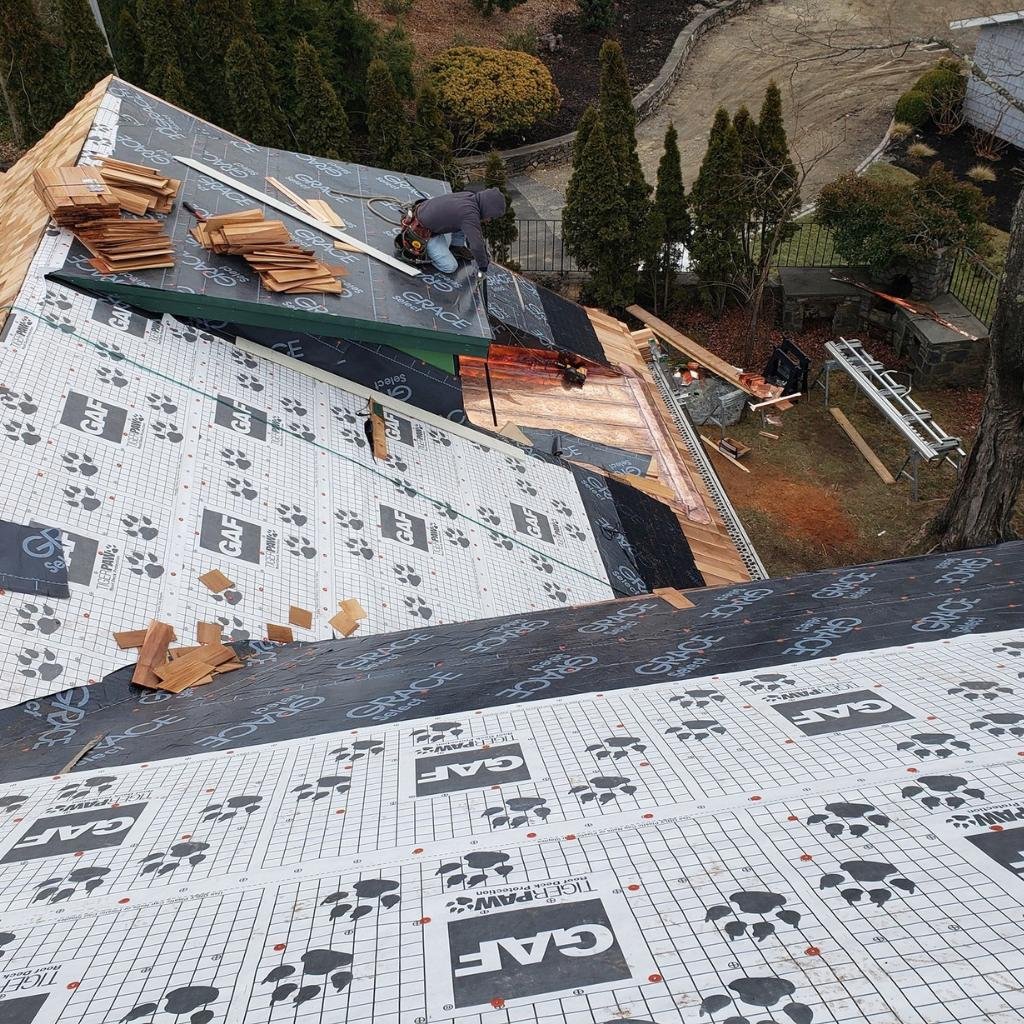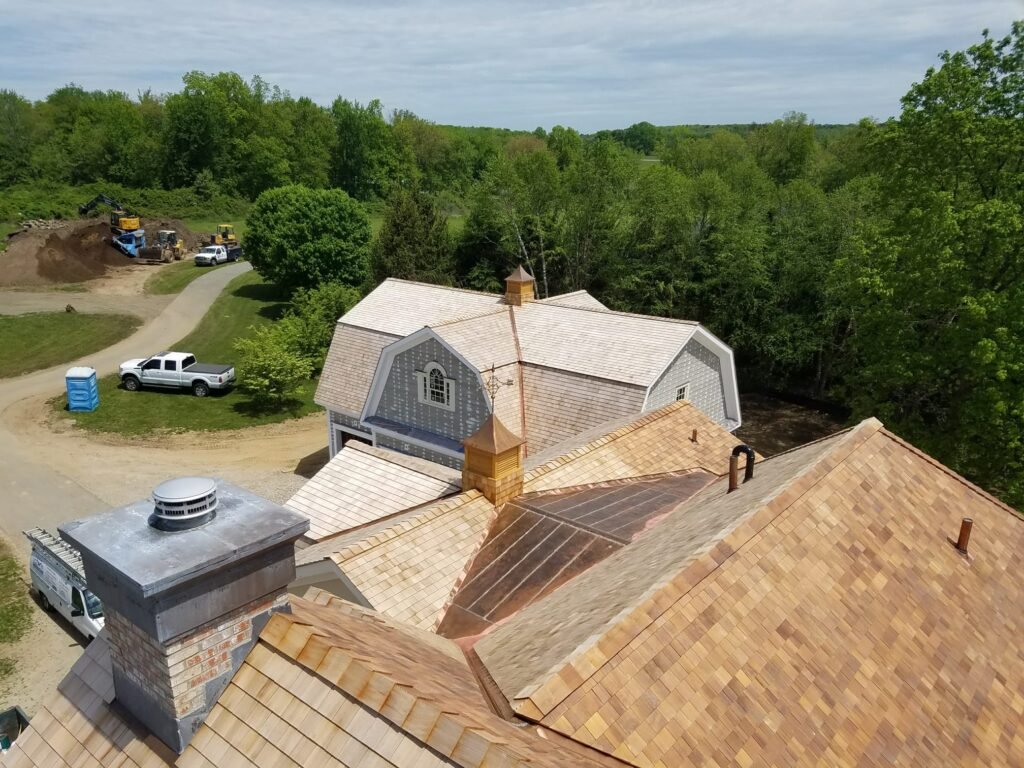Connecticut’s Hail Damage Repair Specialists
Hail damage to your roof can be deceptive. While some impacts create obvious holes or cracks, most hail damage appears subtle at first but compromises your roof’s integrity and dramatically shortens its lifespan. Connecticut hailstorms, though less frequent than other severe weather, can affect entire neighborhoods and cause thousands of dollars in damage within minutes.
At American Quality Roofing and Siding, we’ve spent over 25 years identifying and repairing hail damage throughout Connecticut. Our certified inspectors are trained to recognize the specific patterns and signs of hail impact that untrained eyes often miss. This expertise is critical because hail damage may not cause immediate leaks, yet insurance claims have strict time limits that expire long before problems become obvious.
Many Connecticut homeowners discover hail damage only after their insurance claim window has closed, leaving them responsible for full replacement costs. Others unknowingly live with compromised roofs that fail prematurely, losing years of expected service life. Our professional hail damage assessment identifies all impacts, documents damage thoroughly for insurance purposes, and provides the expert repairs necessary to restore your roof’s complete protection.
We understand the urgency of hail damage claims and work efficiently to assess damage, communicate with insurance companies, and complete repairs before your roof sustains further deterioration. Connecticut homeowners trust our expertise to protect their investment and ensure they receive the insurance coverage they deserve.
Free Estimates – Contact Us Today
Understanding Hail Damage
How Hail Damages Connecticut Roofs
Hail creates unique damage patterns that differ significantly from wind or impact damage. Understanding these patterns helps homeowners recognize when professional inspection is necessary.
Impact Bruising: Hailstones striking asphalt shingles create bruises that may not penetrate the surface initially. These impacts compress the mat beneath the protective granule layer, creating weak points that accelerate deterioration. Bruised areas lose flexibility, crack under thermal stress, and fail prematurely even without visible holes.
Granule Displacement: Hail impacts knock protective granules from shingle surfaces, exposing underlying asphalt to UV radiation and weather. This granule loss appears as dark spots or circles on shingles and dramatically accelerates aging. Areas losing significant granules may deteriorate in months rather than the years of protection remaining on undamaged sections.
Seal Damage: The adhesive strips bonding shingles together can separate from hail impacts. Broken seals allow wind to lift shingles more easily during future storms, creating vulnerability to water intrusion and progressive damage.
Puncture and Cracking: Large hailstones or direct impacts can crack shingles completely or create punctures through multiple layers. These failures allow immediate water intrusion and require prompt repair to prevent interior damage.
Flashing and Metal Damage: Hail dents metal flashing, ridge caps, vents, and gutters. While dents may seem cosmetic, they can compromise seals, create water entry points, and indicate the force of impacts affecting your entire roof system.
Underlayment Compromise: Severe hailstorms can damage underlayment even without penetrating shingles. This hidden damage eliminates your roof’s secondary protection layer, leaving you vulnerable to leaks when the shingle layer eventually fails.
Cumulative Effect: Multiple hailstorms compound damage. A roof that survived one hailstorm with minor impacts may fail completely after a second event. Connecticut’s occasional hail seasons mean roofs can sustain damage from several storms over time, with cumulative effects causing premature failure.
Our inspectors understand these damage mechanisms and identify all hail impacts, ensuring comprehensive assessment and appropriate repair recommendations.
Recognizing Hail Damage Signs
Is Your Roof Hail Damaged?
Identifying hail damage requires knowing what to look for. Many signs aren’t immediately obvious to homeowners, yet indicate serious problems requiring professional attention.
Visible Shingle Indicators:
- Dark spots or circles where granules are missing
- Shiny areas on shingles indicating exposed asphalt
- Dents or divots visible on close inspection
- Cracked or broken shingle pieces
- Asymmetric damage patterns across roof areas
- Random distribution of impacts rather than uniform wear
Metal Component Signs:
- Dents on metal roof vents, pipes, or flashing
- Damaged or dented gutters and downspouts
- Dings on air conditioning units or metal siding
- Damaged chimney caps or metal roof accessories
- Dented satellite dishes or other roof-mounted equipment
Secondary Damage Indicators:
- Damaged window screens or frames
- Dented or damaged siding materials
- Broken or cracked skylights
- Damaged outdoor furniture or equipment
- Vegetation damage like stripped leaves or broken branches
- Pockmarks in wooden decks or fencing
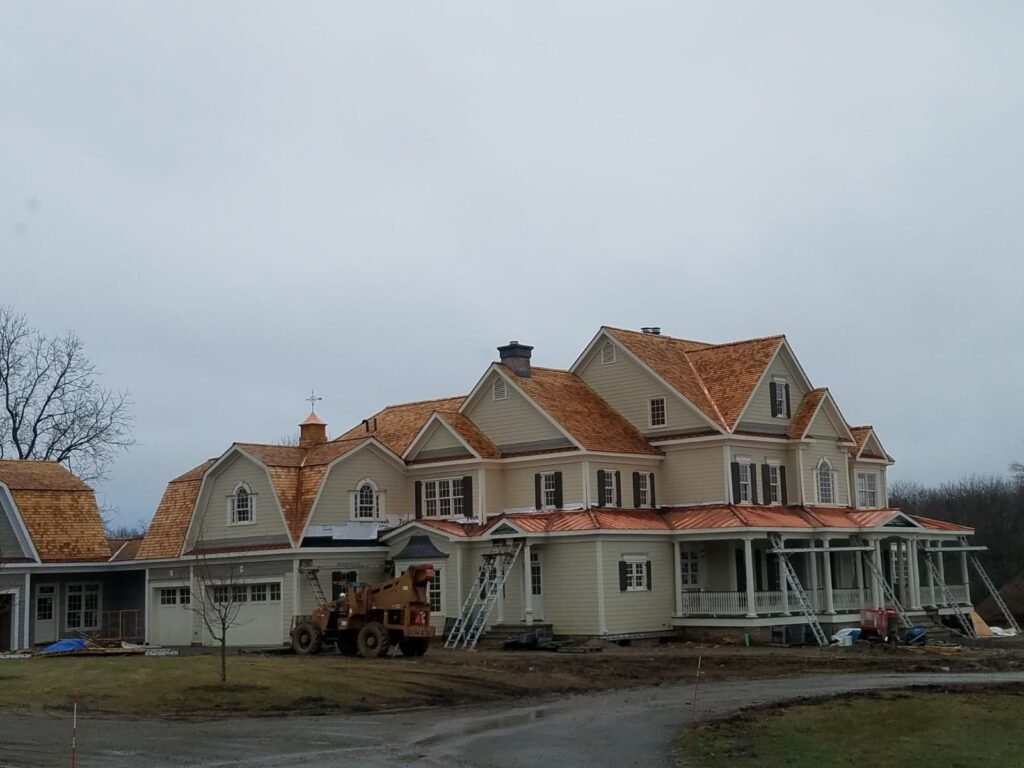
Interior Warning Signs:
- New water stains appearing after hailstorms
- Increased energy bills suggesting compromised roof integrity
- Unusual sounds during subsequent rainstorms
- Attic leaks that weren’t present before
Neighborhood Indicators:
- Multiple neighbors reporting hail damage
- Roofing contractors actively working in your area
- Insurance adjusters inspecting nearby properties
- Storm chasers canvassing neighborhoods
If you observe any of these signs following a hailstorm, professional inspection is essential. Even minor visible damage may indicate extensive hidden impacts affecting your entire roof. Time-sensitive insurance claim requirements make immediate assessment critical to protecting your financial interests.
Connecticut Hail Patterns and Risk
When and Where Hail Threatens Connecticut Roofs
While Connecticut experiences less frequent hail than Midwest states, our hailstorms can be severe and affect large areas simultaneously. Understanding local hail patterns helps homeowners recognize risk and respond appropriately.
Seasonal Patterns: Connecticut hail occurs primarily during spring and summer months, typically May through August. Afternoon and evening thunderstorms during these periods have the highest hail probability. Severe thunderstorm watches and warnings often precede hail events, providing advance notice to monitor conditions.
Geographic Variations: Inland Connecticut areas generally experience more frequent hail than coastal regions. The state’s varied topography influences storm patterns, with some areas facing higher risk during specific weather conditions. However, severe storms can produce hail anywhere in Connecticut, and no area is completely immune.
Hailstone Size Range: Connecticut hailstones typically range from pea-sized (1/4 inch) to golf ball-sized (1.75 inches). Occasionally, severe storms produce larger hailstones reaching baseball size or greater. Even smaller hail can damage roofs, particularly older systems or those with existing vulnerabilities.
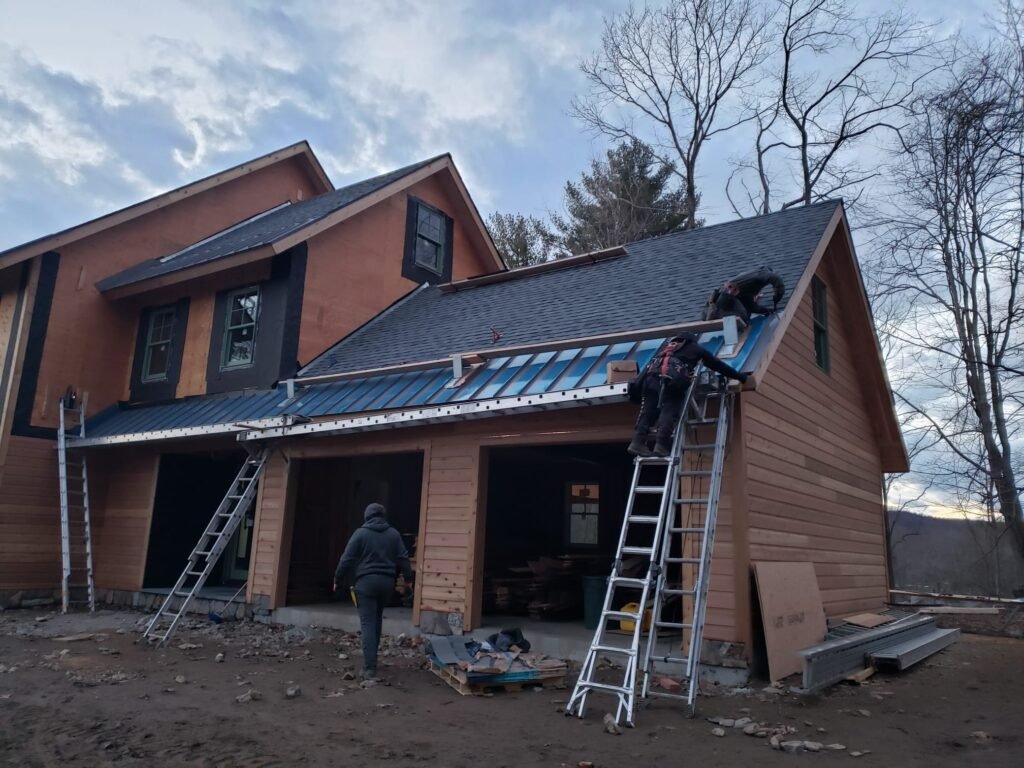
Storm Intensity Factors: Hail damage severity depends on multiple factors beyond hailstone size. Wind speed during the storm, duration of hail fall, ice density, and impact angles all influence damage extent. Wind-driven hail causes more severe damage than vertically falling hail, and prolonged events create more impacts than brief hail bursts.
Multiple Storm Risk: Some years bring multiple hail-producing storms to Connecticut. Roofs surviving one event with minor damage may fail completely after subsequent storms. Cumulative damage from several events can necessitate replacement even when individual storms wouldn’t have caused complete failure alone.
Climate Considerations: Connecticut’s freeze-thaw cycles interact with hail damage, accelerating deterioration. Hail impacts create entry points for moisture, which freezes during winter and expands, worsening damage. This climate combination means Connecticut hail damage often progresses faster than similar damage in more temperate regions.
Understanding these patterns emphasizes the importance of prompt professional assessment after any hailstorm. What seems like minor damage may be extensive when evaluated by trained specialists, and addressing problems quickly prevents both deterioration and insurance claim complications.
quality Services
We Provide Quality
Roofing Services Throughout CT
5 Star Reviews
Projects
Teams available
Hail Damage Insurance Claims
Navigating Connecticut Hail Damage Insurance Claims
Hail damage insurance claims require specific knowledge and documentation. Our extensive claims experience helps Connecticut homeowners receive appropriate coverage for necessary repairs.
Time-Sensitive Requirements: Most insurance policies require damage reporting within specific timeframes after storms, often 30-90 days. Missing these deadlines can result in claim denial regardless of damage severity. Immediate professional assessment after hailstorms ensures timely reporting and proper documentation.
Documentation Standards: Insurance companies require substantial evidence of hail damage. Our professional documentation includes detailed photographs showing impact patterns, measurements of damaged areas, specifications of all affected components, and expert reports explaining damage mechanisms and necessary repairs. This comprehensive evidence supports claim approval and appropriate coverage.
Adjuster Inspections: Insurance adjusters evaluate damage to determine coverage. However, adjusters may lack roofing expertise or have incentives to minimize claim payouts. Our presence during adjuster inspections ensures all damage is identified, proper repair methods are specified, and coverage includes all necessary work.
Cosmetic vs. Functional Damage: Insurance companies sometimes classify hail damage as cosmetic, particularly when leaks haven’t occurred. However, hail impacts compromise roof integrity and lifespan even without immediate leaks. We help demonstrate functional damage, ensuring coverage for necessary replacement rather than denial based on “cosmetic only” classifications.
Repair vs. Replacement Decisions: Determining whether to repair or replace hail-damaged roofs depends on damage extent, roof age, and policy coverage. Connecticut building codes may require full replacement when damage affects specified percentages of roof areas. We provide expert guidance on the most appropriate and cost-effective approach.
Matching Requirements: When partial replacement is necessary, matching existing materials may be impossible if products are discontinued. Insurance policies typically cover costs to replace larger areas when matching isn’t feasible, ensuring uniform appearance. We document matching difficulties and work with insurance companies to include appropriate coverage.
Depreciation and Coverage Limits: Insurance policies may apply depreciation to older roofs or have coverage limits affecting payout amounts. Understanding your specific policy terms helps set realistic expectations. We explain coverage limitations and help you make informed decisions about proceeding with repairs.
Supplement Claims: Sometimes additional damage becomes apparent during repairs. We document these discoveries and submit supplemental claims ensuring complete coverage rather than leaving you with unexpected costs.
Our claims assistance has helped hundreds of Connecticut homeowners navigate complex insurance processes and receive appropriate coverage for hail damage repairs. This expertise provides significant value beyond our installation and repair services.
Hail Damage Assessment Process
How We Identify All Hail Damage
Professional hail damage assessment requires specialized training and systematic inspection techniques. Our thorough process ensures no damage goes undetected.
Initial Storm Verification: We confirm hailstorms occurred in your area using weather service data, radar records, and local reports. This documentation establishes the date and severity of potential damage events, which is essential for insurance claims.
Comprehensive Roof Inspection: Our certified inspectors examine every roof section, checking shingles, flashing, valleys, ridges, penetrations, and all vulnerable areas. We look for specific hail damage patterns including impact craters, granule displacement, bruising, and cracking.
Test Square Analysis: We identify the most severely damaged roof sections and analyze these “test squares” in detail. Test squares help establish damage patterns and severity, providing baseline information for evaluating the entire roof system.
Impact Density Measurement: We count and document impacts within specific areas, determining whether damage meets insurance thresholds for replacement versus repair. Proper impact density measurement is critical for appropriate coverage determination.
Underlying Damage Assessment: We examine underlayment, decking, and structural components for hail damage that may have penetrated surface materials. This evaluation identifies hidden damage that surface inspection alone cannot reveal.
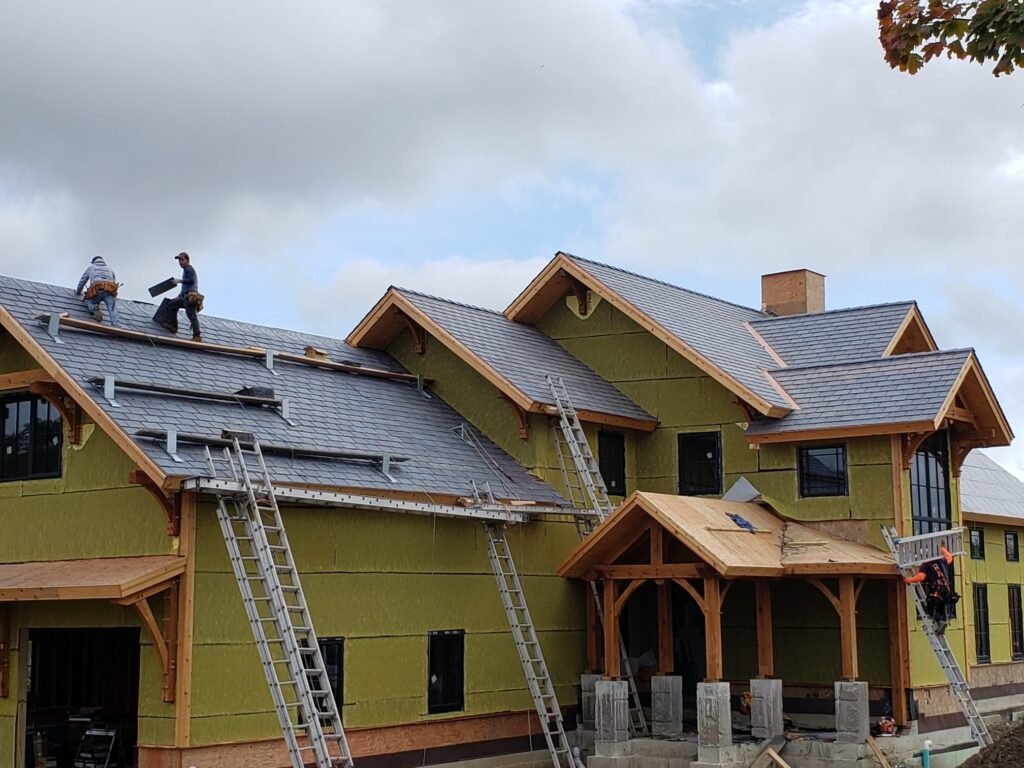
Collateral Damage Documentation: We inspect gutters, flashing, vents, skylights, and all roof-mounted components for hail damage. Insurance claims should include all damaged elements, not just shingles, ensuring complete restoration coverage.
Photographic Evidence Collection: We photograph all damage using techniques that clearly show impact patterns, granule loss, and other hail indicators. These photos provide essential evidence for insurance documentation and claim support.
Detailed Reporting: We compile findings into comprehensive reports specifying damage locations, severity, affected areas, and repair requirements. These professional reports support insurance claims and provide clear documentation for all parties.
This systematic approach ensures accurate damage assessment and appropriate repair recommendations, protecting both your roof’s integrity and your insurance claim interests.
Hail Damage Repair vs. Replacement
Determining the Right Solution for Hail-Damaged Roofs
After hail damage, homeowners face important decisions about repair versus replacement. Several factors determine the most appropriate and cost-effective approach.
Damage Extent Evaluation: Limited damage affecting small roof areas may warrant repair, while widespread damage across large sections typically necessitates replacement. We provide objective assessment of damage distribution and honest recommendations based on your specific situation.
Insurance Coverage Impact: Insurance policies often cover full replacement when damage exceeds specified thresholds, typically 8-10 impacts per 100 square feet. Understanding your coverage and how damage measurements relate to policy terms helps determine whether repair or replacement provides better value.
Roof Age Considerations: Newer roofs with isolated hail damage usually benefit from repairs extending their service life economically. Older roofs approaching the end of their expected lifespan may be better served by replacement, particularly when hail damage is moderate to severe.
Material Availability: Discontinued shingles or specialty materials may be impossible to match perfectly. Visible patching results even with expert repairs when materials can’t be matched. Replacement eliminates these concerns and provides uniform appearance.
Future Performance Expectations: Repaired sections may perform well while surrounding original materials continue aging. This situation can create ongoing maintenance needs as older areas fail over time. Complete replacement provides uniform protection and predictable performance.
Hidden Damage Factors: Sometimes hail damage reveals underlying problems like inadequate ventilation, improper installation, or deteriorated decking. Addressing these issues during replacement provides better long-term value than repairing surface damage while leaving fundamental problems intact.
Code Compliance Requirements: Connecticut building codes may mandate full replacement when repairs exceed certain thresholds or affect specified roof percentages. We help you understand code requirements and ensure compliance with all applicable regulations.
Warranty Protection: Full replacement typically includes comprehensive manufacturer and workmanship warranties. Repairs may have limited warranty coverage that doesn’t extend to surrounding materials. Understanding warranty differences helps evaluate long-term protection for each option.
Our recommendations always prioritize your best interests. We explain advantages and disadvantages of each approach, provide cost comparisons, and help you make informed decisions based on your specific circumstances and insurance coverage.
Hail Impact-Resistant Roofing Solutions
Impact-Resistant Roofing Solutions
While hail cannot be prevented, choosing appropriate materials and installation methods significantly reduces damage severity during future hailstorms.
Impact-Resistant Shingles
Enhanced Underlayment
Proper Installation Techniques
Metal Roofing Options
Strategic Material Selection
Ventilation and Structural Enhancement
Regular Maintenance Benefits
Insurance Considerations
Don’t Delay Professional Repair
Our Hail Damage Repair Process
Complete Hail Damage Restoration
Our systematic approach ensures thorough assessment, appropriate insurance coverage, and quality repairs that restore complete protection.
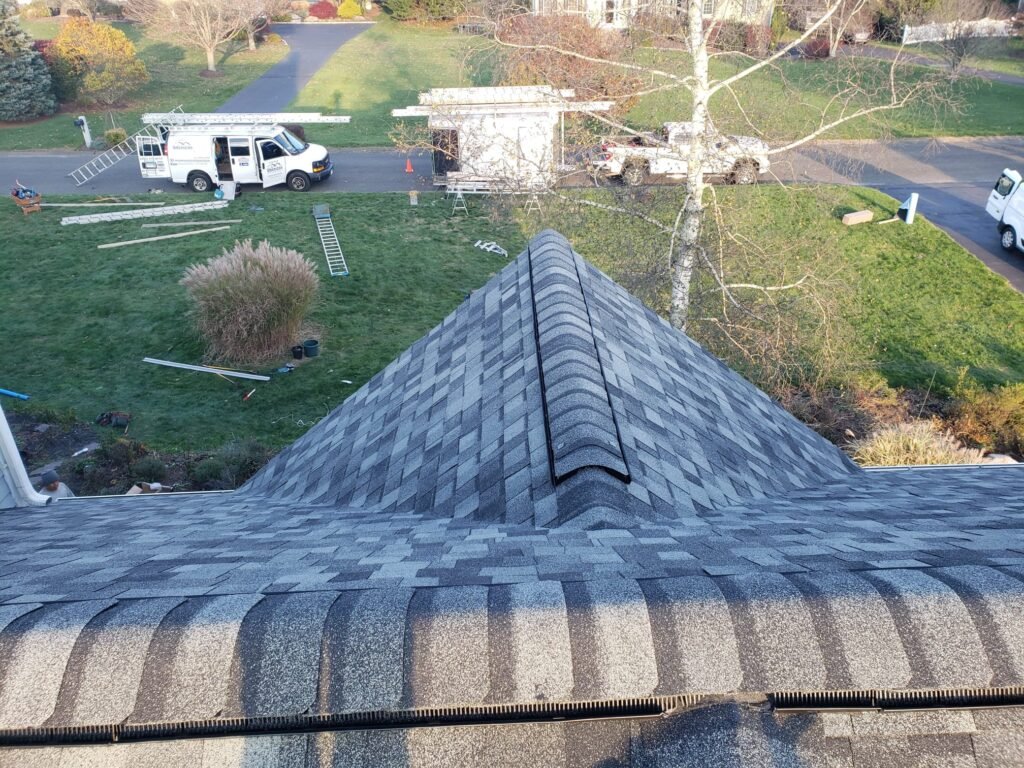
Professional Hail Damage Assessment
Our certified inspectors conduct comprehensive evaluation of all roof areas, identifying every impact and documenting damage patterns. We measure impact density, assess severity, and determine whether repair or replacement is most appropriate.
Detailed Documentation and Reporting
We create thorough photographic documentation and written reports specifying all damage. This professional evidence supports your insurance claim and provides clear records of storm impact and necessary restoration work.
Insurance Company Coordination
We communicate directly with your insurance company, submit documentation, and work with adjusters during inspections. Our expertise ensures all damage is recognized and appropriate coverage is provided for necessary repairs.
Comprehensive Repair Planning
Based on assessment findings and insurance approval, we develop detailed specifications for all restoration work. You’ll understand exactly what repairs will be completed, what materials will be used, and realistic completion timelines.
Quality Material Selection
We source premium materials appropriate for your roof type and Connecticut’s climate. When impact-resistant upgrades make sense, we explain options and benefits, helping you make informed decisions about enhanced protection.
Expert Installation
Our factory-certified crews complete all work following manufacturer specifications and proven techniques. We maintain clean, organized work sites and complete projects efficiently while ensuring quality is never compromised.
Final Inspection and Warranty Protection
We conduct thorough quality verification, ensure your complete satisfaction, and provide comprehensive warranty documentation covering both materials and workmanship. Your restored roof will provide reliable protection for years to come.
Why Choose Us for Hail Damage Repair
Connecticut’s Certified Hail Damage Specialists
Proven Storm Response Experience: Twenty-five years of responding to Connecticut storms means we’ve seen it all. Nor’easters, severe thunderstorms, ice storms, and hurricane remnants have all tested our expertise. This experience ensures efficient, effective restoration regardless of damage type or severity.
Insurance Claim Expertise: We’ve successfully managed hundreds of storm damage insurance claims. Our professional documentation, adjuster communication skills, and understanding of coverage issues help Connecticut homeowners receive fair compensation for necessary repairs.
Factory-Certified Installation: Our certifications with GAF Materials Corporation and as ShingleMaster™ CertainTeed Select contractors ensure our repair work meets the highest industry standards. These certifications require ongoing training and proven quality, guaranteeing expert restoration.
No-Pressure Honest Assessment: We provide truthful evaluation of hail damage and appropriate repair recommendations. If your roof isn’t damaged, we’ll tell you. Our reputation depends on honesty, not generating unnecessary work.
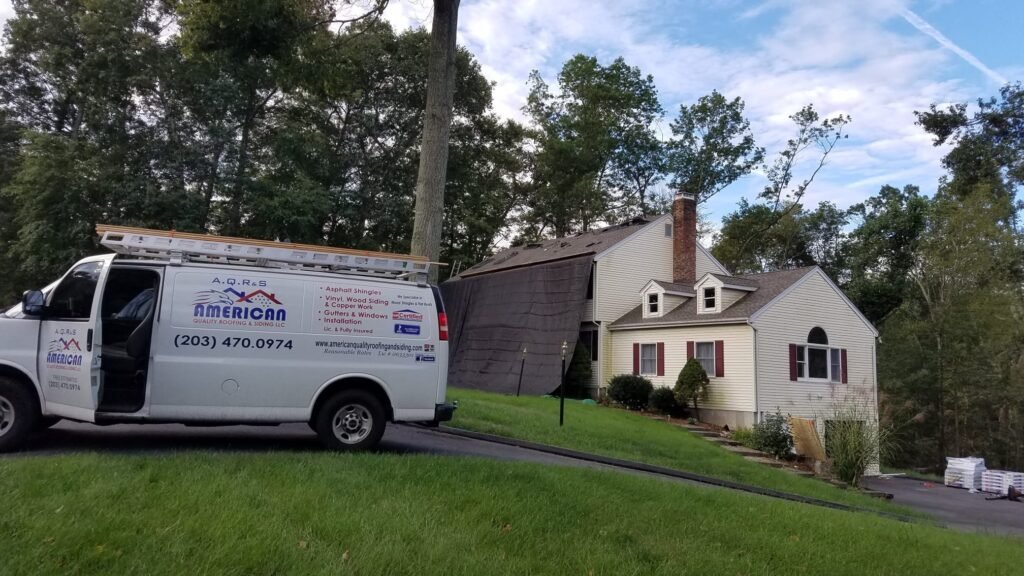
Complete Project Management: From initial inspection through final warranty documentation, we handle every aspect of hail damage restoration. This comprehensive management eliminates stress and ensures efficient, quality completion.
Licensed and Insured Protection: Connecticut License #HIC 0633301 and comprehensive insurance coverage protect you throughout the restoration process. This licensing and insurance provides accountability and security.
Quality Without Compromise: We use only premium materials and proven installation techniques. Shortcuts might reduce costs temporarily but lead to recurring problems and higher long-term expenses. Our quality focus provides lasting value.
Comprehensive Warranty Coverage: All hail damage repairs include warranty protection for materials and workmanship. This coverage demonstrates our confidence in repair quality and provides long-term peace of mind.
FAQs
Common Questions About Hail Damage Roof Repair
Hail damage raises specific questions about assessment, insurance coverage, and repair options. Over our 25 years serving Connecticut families, we’ve helped hundreds of homeowners navigate hail damage situations, from initial identification through complete restoration. Below are the most common concerns homeowners have about hail damage to their roofs. If you don’t see your specific question answered here, our team is always available to provide personalized guidance for your situation.
Hail Damage? Get An Expert Assessment Today
Hail damage won’t improve with time. Even impacts that seem minor compromise your roof’s integrity and shorten its lifespan dramatically. Insurance claim time limits mean delays can cost you thousands in coverage you deserve.
Our hail damage specialists provide thorough assessment, professional documentation, and complete restoration services. With over 25 years of experience and 778+ successfully completed projects, we have the expertise to identify all damage and ensure appropriate insurance coverage.
We work directly with insurance companies, streamlining the claims process and advocating for complete coverage of necessary repairs. Our factory-certified crews provide quality restoration backed by comprehensive warranties.
- Licensed and Insured – CT #HIC 0633301
- Factory Certified by GAF Materials Corporation
- ShingleMaster™ CertainTeed Select Contractors
- A+ Better Business Bureau Rating

